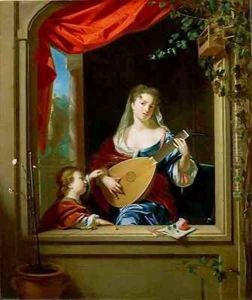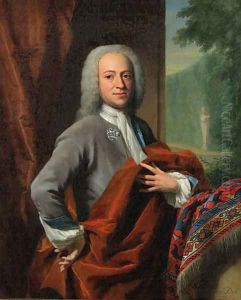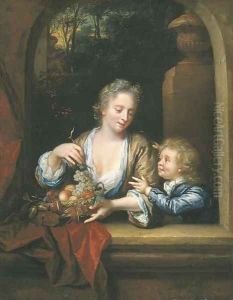Philip van Dyck Paintings
Philip van Dyck, sometimes spelled Philips van Dijk or Dyk, was a Dutch painter born in Amsterdam in the Netherlands in 1680. Although not as widely recognized as some of his contemporaries, van Dyck was a talented artist who contributed to the Dutch Golden Age of painting, which is renowned for its mastery of light and shadow, its rich detail, and its overall contribution to the development of Western art.
Van Dyck's early life and artistic training remain somewhat obscure, but it is known that he was active during the early 18th century. His work primarily consisted of portraits, following the tradition of Dutch portraiture, which was highly popular during this period. His style was influenced by the prevailing Baroque sensibilities of the time, characterized by an emphasis on dramatic lighting and a certain degree of realism.
Despite his skills, Philip van Dyck did not achieve the same level of fame as some of his contemporaries, such as Rembrandt or Vermeer. Nonetheless, his portraits were appreciated for their elegance and detail. He painted various figures from Dutch society, capturing the attire and attitudes of the patrician class.
Van Dyck's career spanned several decades of the 18th century, a period that saw the transition from the Baroque to the Rococo in European art. However, details of his professional and personal life, including his patrons, the scope of his work, and his influence on other artists, remain relatively under-documented in historical records.
Philip van Dyck passed away in 1753. While his work may not be as extensively studied as that of the leading lights of Dutch painting, his portraits still provide a valuable glimpse into the society and culture of the Netherlands in the early 1700s. His contributions to the art world continue to be recognized by art historians and collectors who appreciate the depth and quality of the Dutch artistic tradition.


